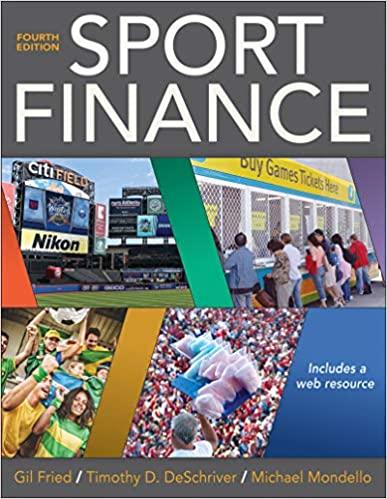
On October 11, 2011, CAC and our co-counsel, the law firm of Dewey & LeBoeuf, filed an amici curiae brief in the Supreme Court on behalf of prominent professors of preemption law, defending a California law prohibiting the slaughter of non-ambulatory livestock against a federal preemption challenge brought by the National Meat Association (NMA). The California law was enacted in 2008, just months after a national scandal associated with the treatment of livestock that were unable to walk. The purpose of the law was to raise the bar for the ethical treatment of livestock in California. NMA filed suit in federal district court, challenging the state law's prohibition on the slaughter of non-ambulatory livestock on the ground that it's preempted by the Federal Meat Inspection Act (FMIA). The district court ruled in favor of the NMA, but a three-judge panel of the Ninth Circuit unanimously reversed the ruling, holding that the FMIA does not preempt California law. The NMA then successfully petitioned for Supreme Court review. In our brief, we argued that a federal law enacted to govern the inspection of livestock bound for slaughter would not prevent California from choosing to exclude certain kinds of animals from the slaughtering process altogether. This common-sense reading of the FMIA is supported by the FMIAs savings clause," the text and structure of which acknowledge the important role of states when it comes to issues of health and welfare. While the Constitution's Supremacy Clause certainly recognizes that Congress may displace state law, principles of federalism require that courts do not give unintended preemptory effect to federal law, particularly in areas of traditional state regulation, as in this case. Unfortunately, the Supreme Court unanimously found the state law preempted, striking a blow against California's efforts to ensure safe and humane treatment of animals intended for slaughter and making it more difficult for all states to protect public health through regulation of the food supply. PLEASE DO A CASE BRIEF ON THIS CASE FOLLOWING THESE STEPS. THANK YOU SO MUCH. 1. Give the name and citation" of the case. This is where the case can be found. It may look like " Encino Motorcars v. Navarro, 579 U.S. ___ (2016), 584 U.S. ___ (2018). Sometimes, the page number may not be available. 2. Provide a concise summary and statement of the important facts in the case. Keep in mind that sometimes the "facts are actually the procedures used to get the case to the Supreme Court, and those will be what are discussed. 3. Do a brief summary of the procedures that were used in the case. Where was a case initially filed, and what appeals have ooccurred? List these out. 4. Note the primary issue in the case. Sometimes the opinion will have that, or sometimes you may have it. 5. If there is an existing rule in the area of law surrounding the case, note that.6. Show the decision and show the vote of the judges. This is highly useful information. On October 11, 2011, CAC and our co-counsel, the law firm of Dewey & LeBoeuf, filed an amici curiae brief in the Supreme Court on behalf of prominent professors of preemption law, defending a California law prohibiting the slaughter of non-ambulatory livestock against a federal preemption challenge brought by the National Meat Association (NMA). The California law was enacted in 2008, just months after a national scandal associated with the treatment of livestock that were unable to walk. The purpose of the law was to raise the bar for the ethical treatment of livestock in California. NMA filed suit in federal district court, challenging the state law's prohibition on the slaughter of non-ambulatory livestock on the ground that it's preempted by the Federal Meat Inspection Act (FMIA). The district court ruled in favor of the NMA, but a three-judge panel of the Ninth Circuit unanimously reversed the ruling, holding that the FMIA does not preempt California law. The NMA then successfully petitioned for Supreme Court review. In our brief, we argued that a federal law enacted to govern the inspection of livestock bound for slaughter would not prevent California from choosing to exclude certain kinds of animals from the slaughtering process altogether. This common-sense reading of the FMIA is supported by the FMIAs savings clause," the text and structure of which acknowledge the important role of states when it comes to issues of health and welfare. While the Constitution's Supremacy Clause certainly recognizes that Congress may displace state law, principles of federalism require that courts do not give unintended preemptory effect to federal law, particularly in areas of traditional state regulation, as in this case. Unfortunately, the Supreme Court unanimously found the state law preempted, striking a blow against California's efforts to ensure safe and humane treatment of animals intended for slaughter and making it more difficult for all states to protect public health through regulation of the food supply. PLEASE DO A CASE BRIEF ON THIS CASE FOLLOWING THESE STEPS. THANK YOU SO MUCH. 1. Give the name and citation" of the case. This is where the case can be found. It may look like " Encino Motorcars v. Navarro, 579 U.S. ___ (2016), 584 U.S. ___ (2018). Sometimes, the page number may not be available. 2. Provide a concise summary and statement of the important facts in the case. Keep in mind that sometimes the "facts are actually the procedures used to get the case to the Supreme Court, and those will be what are discussed. 3. Do a brief summary of the procedures that were used in the case. Where was a case initially filed, and what appeals have ooccurred? List these out. 4. Note the primary issue in the case. Sometimes the opinion will have that, or sometimes you may have it. 5. If there is an existing rule in the area of law surrounding the case, note that.6. Show the decision and show the vote of the judges. This is highly useful information







